Sundholmssamlingen – områdeløft
Sundholm, Amager 2015
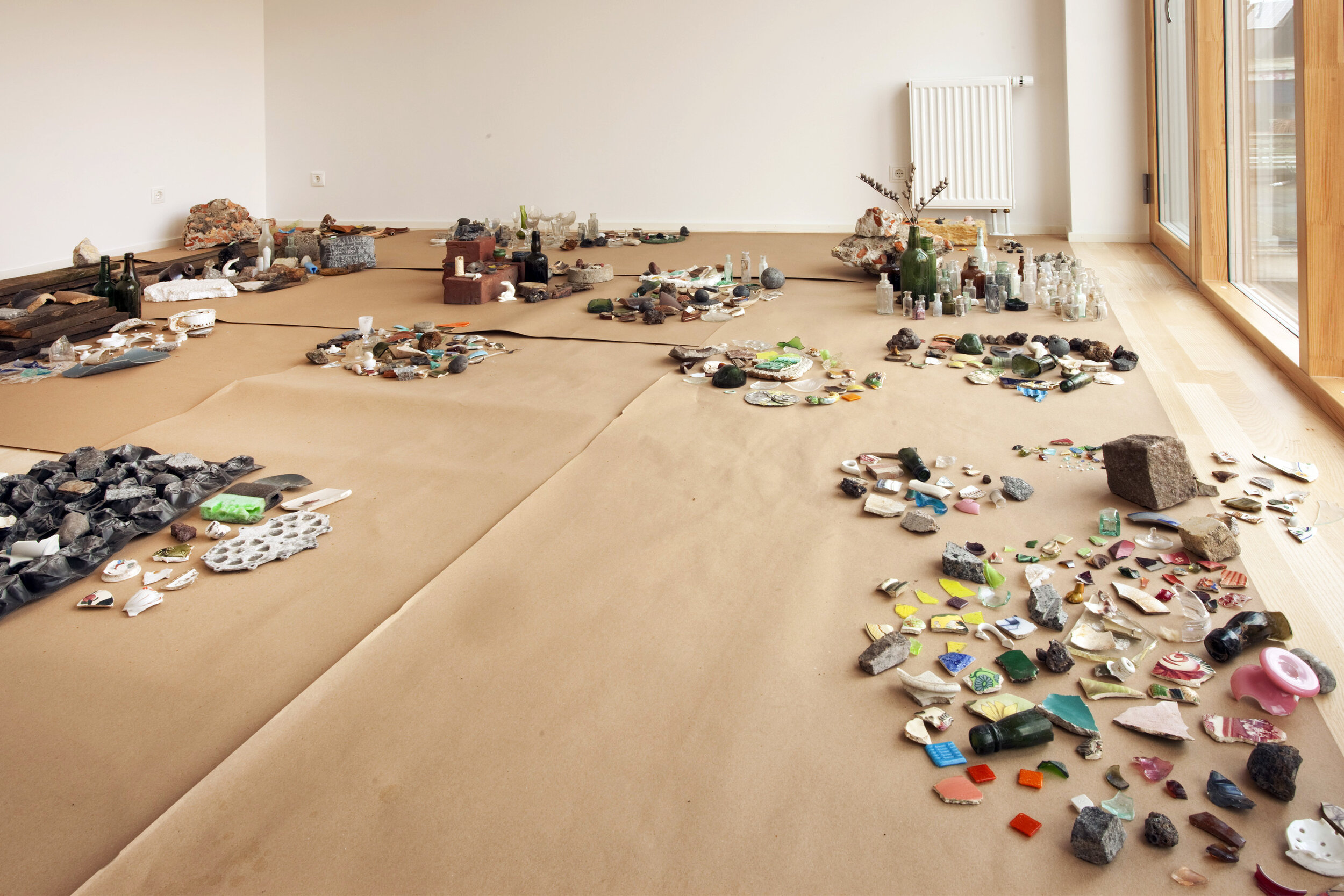
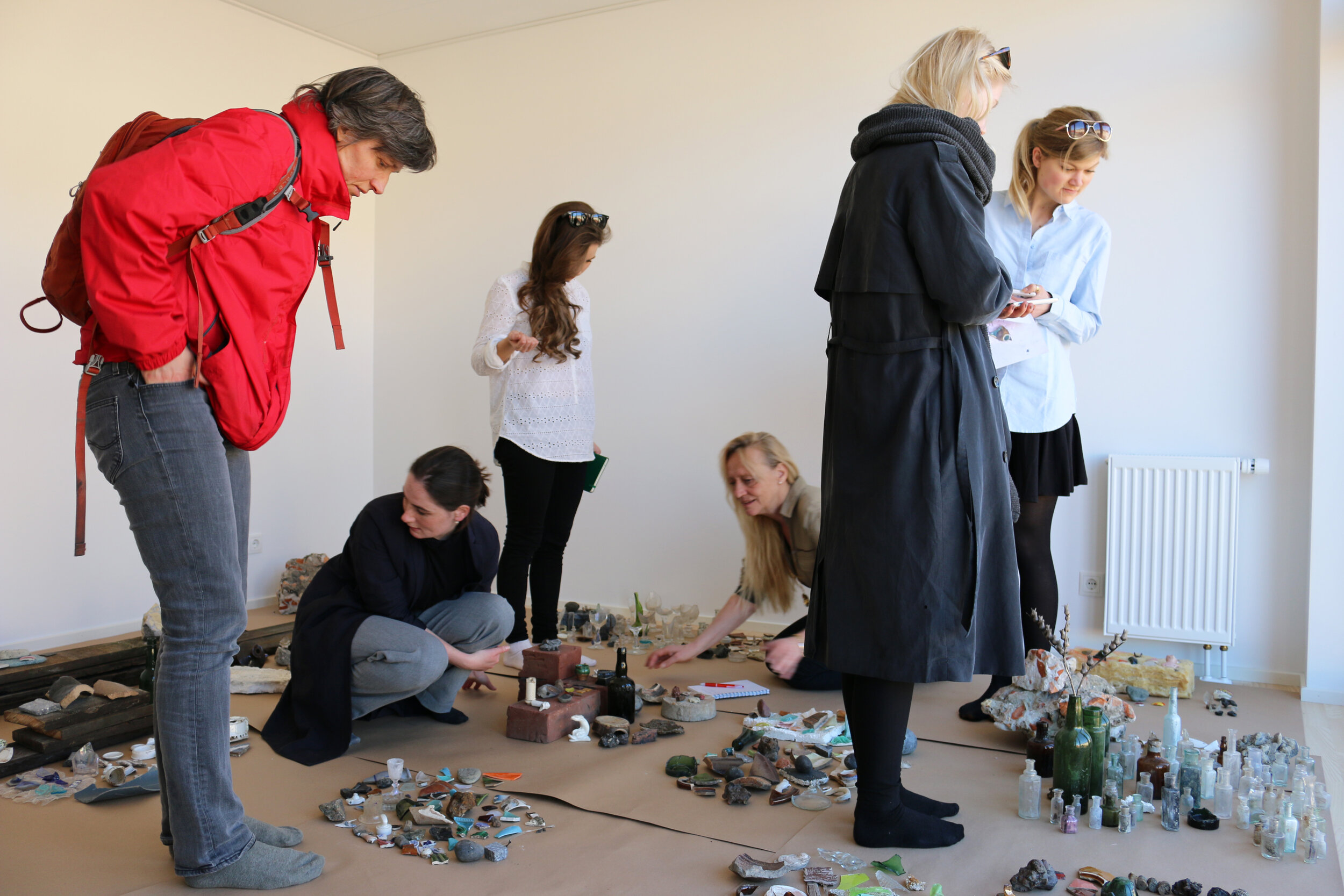
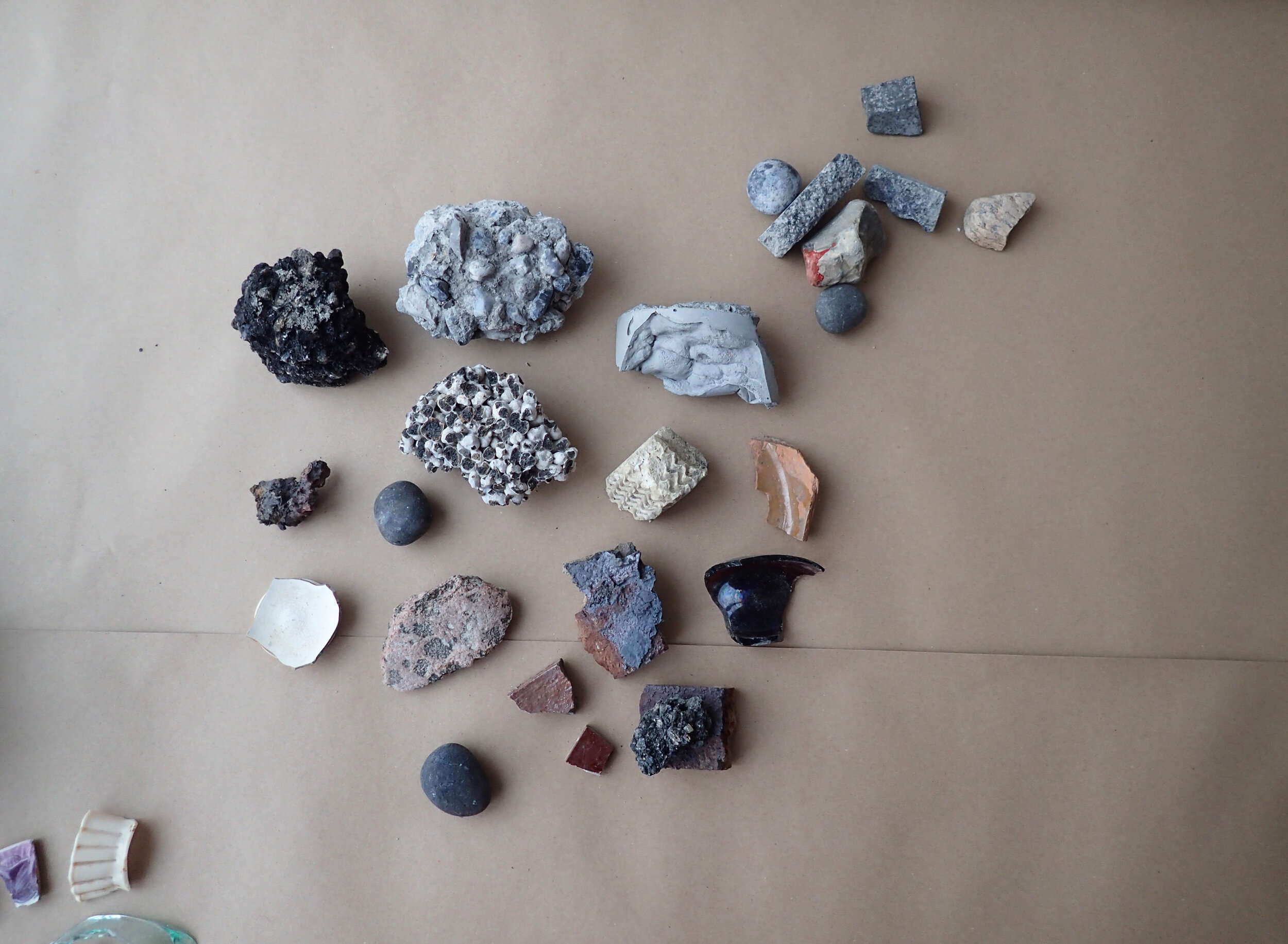
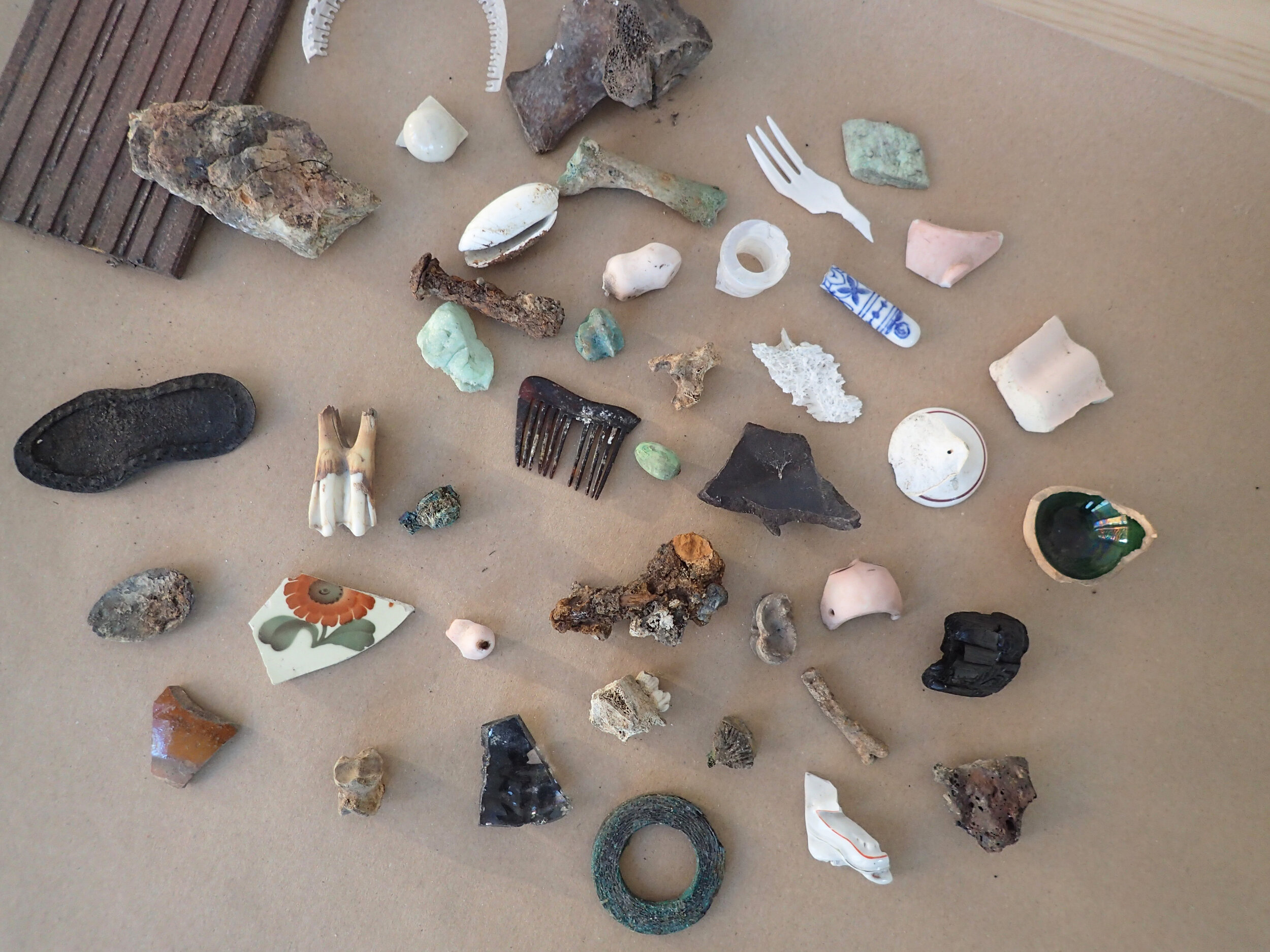
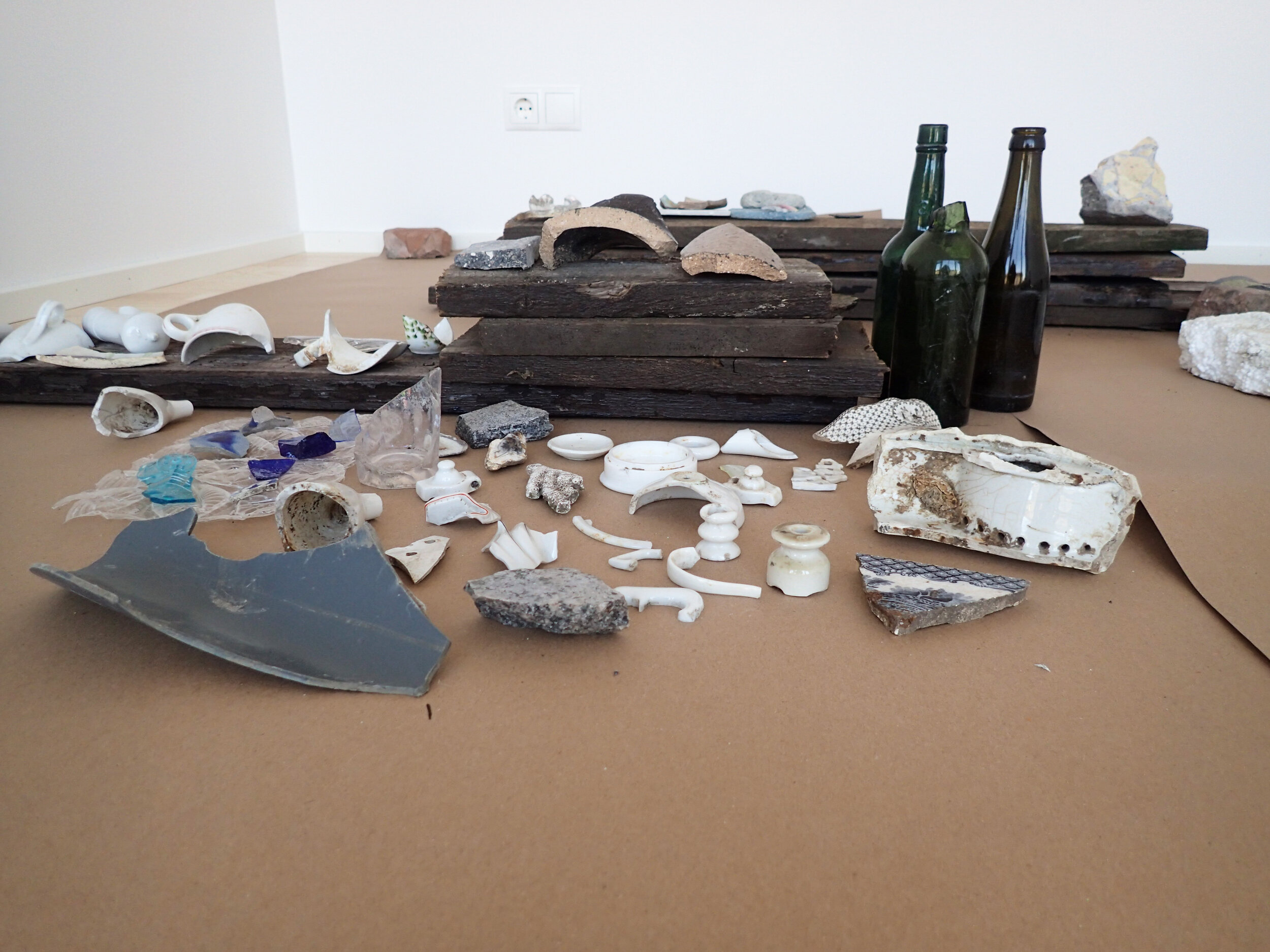
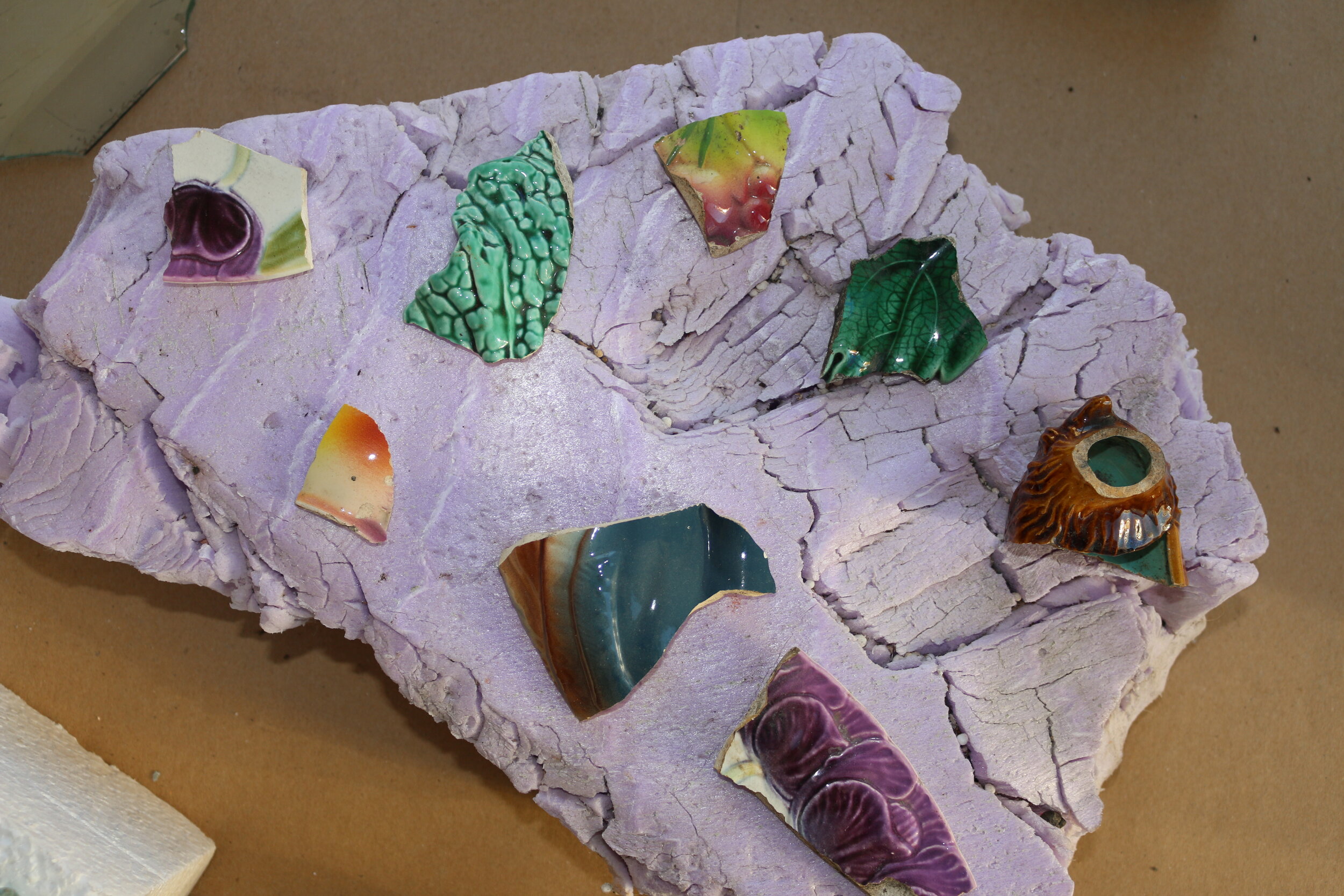

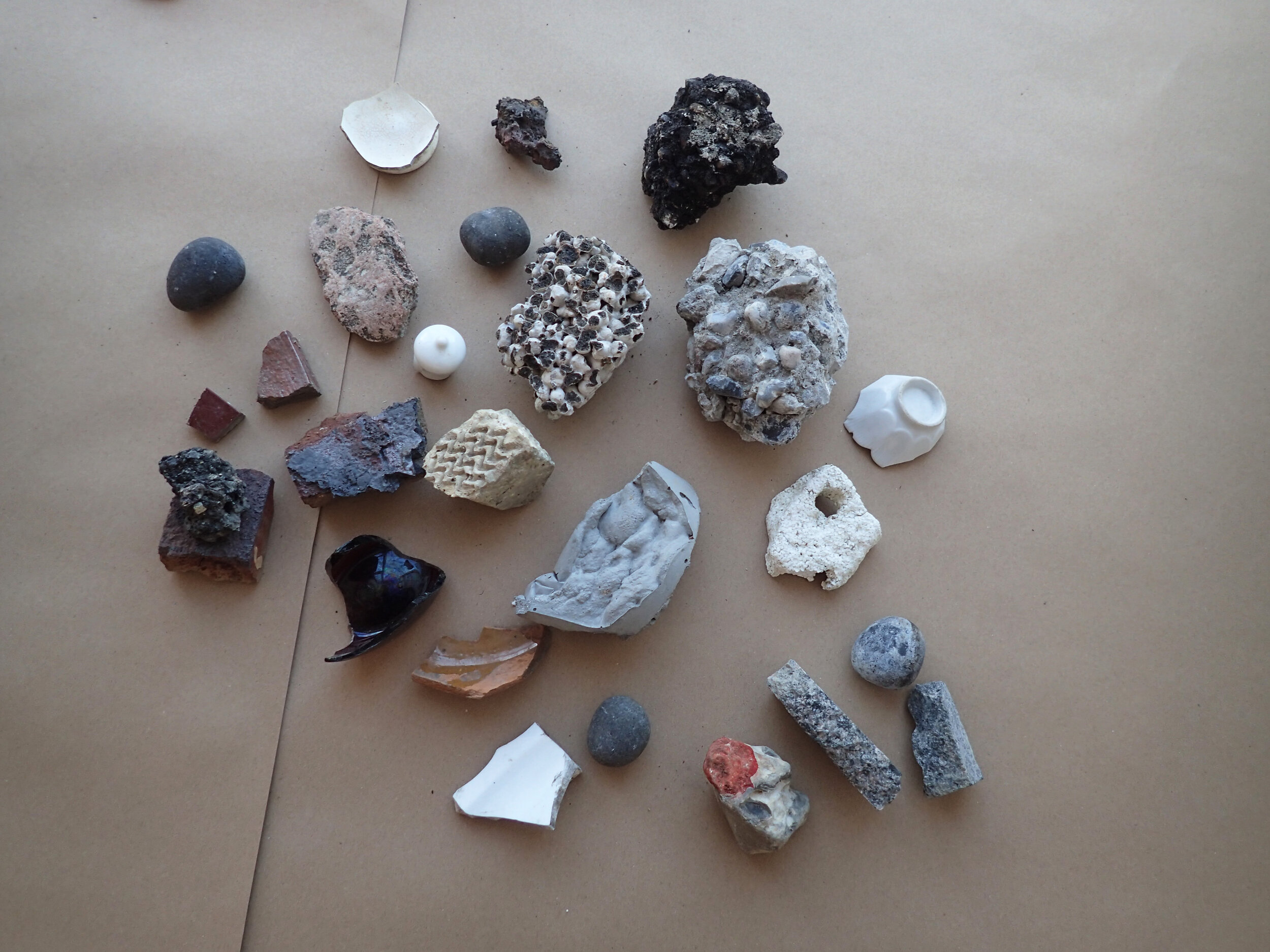
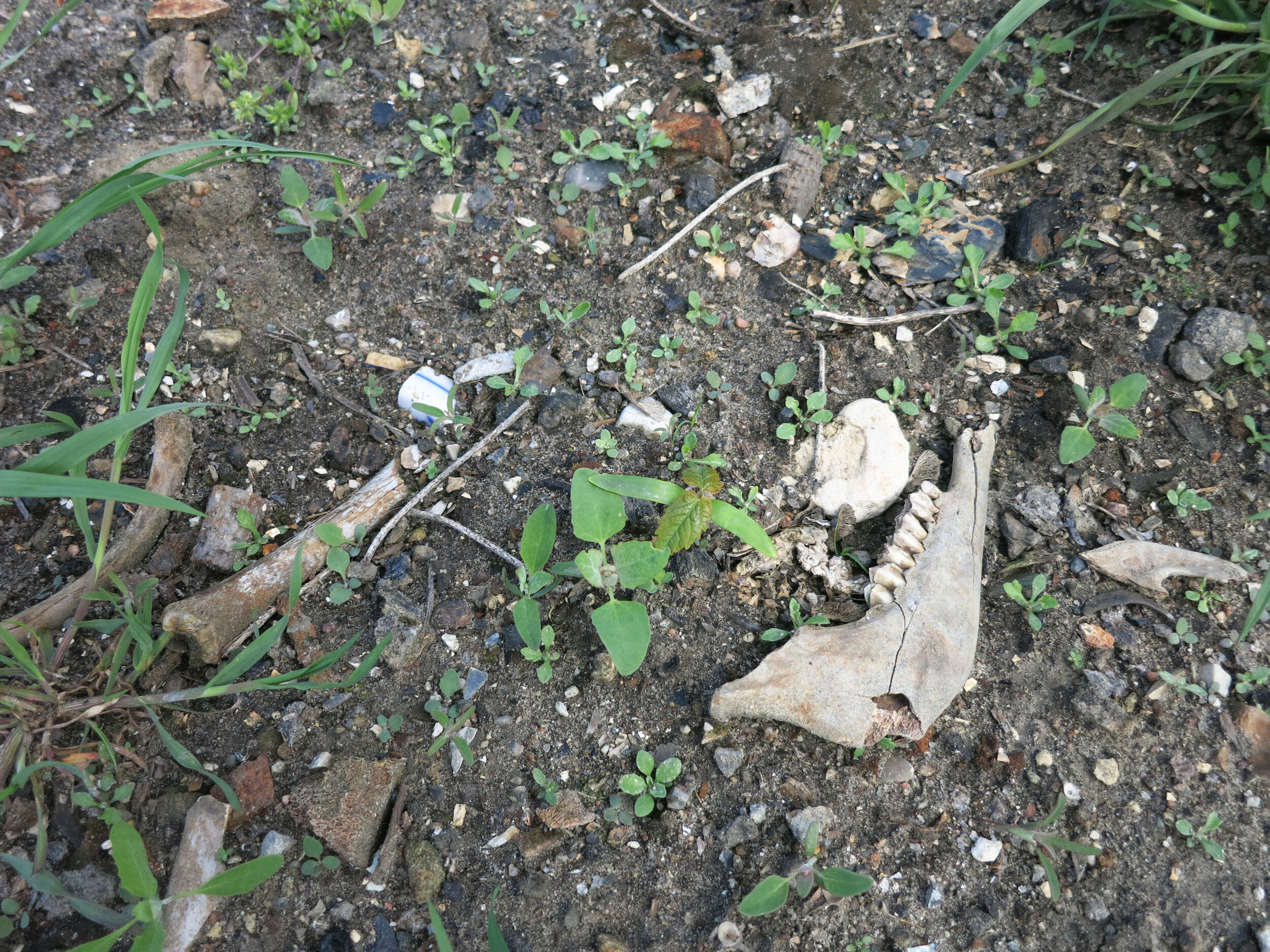
Sundholm, som oprindelig var en arbejdslejr, rummer nu både et herberg og socialt værested for misbrugere, en vuggestue, Fabrikken for Kunst og Design m.m.
Med Københavns Kommunes beslutning om at sælge grunde fra til boligbyggeri blev et stort område omdannet til byggegrund. Byggeprojektet gik i stå og grunden lå hen i to år. I sollyset udenfor Fabrikken for kunstproduktion glimtede glas og porcelæn i overfladen. Det blev en fast rutine og en form for produktion for mig igennem to år at samle, hvad der dukkede op af jorden, lige dér.
Indsamling som kunstproduktion
Sundholmssamlingen var den første udstilling af samlingen, som fandt sted i mit atelier på Fabrikken for Kunst og Design. Genstandene blev ordnet efter materiale – sten, porcelæn og glas – og de blev udstillet på forskellige underlag, der hver især fremhævede genstandenes særlige karaktertræk.
Sundholmssamlingen - Områdeløft var den anden udstilling, der fandt sted i det nybyggeri, som efter to år blev bygget på grunden. Her blev genstandene så at sige løftet fem meter op fra det sted, de var fundet, og placeret i en 3. sals lejlighed på et nyt, ubetrådt gulv. Her måtte man tage skoene af og på strømpesokker gå rundt mellem tingene, mens man gennem ruden kunne se det sted, hvor genstandene var fundet. Titlen refererer både til det konkrete fysiske løft genstandene fik, men også til den kulturelle værdi, der hæves (øges) samtidig med, at Københavns Kommunes Områdeløft forsøgte at løfte Sundholmsområdet og støttede udstillingen økonomisk.
Et hold studerende fra Københavns Universitet, med et tværfagligt forløb i kunsthistorie, arkæologi, historie og antropologi, havde workshops i udstillingen, og det mundende ud i en tekst af antropolog Nathalia Brichet og Frida Hastrup. Jeg lavede efterfølgende en bog om hele projektet, hvor denne tekst indgik. Ved bogreceptionen fik man en genstand efter eget valg, når man købte bogen og på den måde fordeltes en del af genstandene videre ud i verden.
Bogen kan fås ved henvendelse, se kontaktinfo.
Sundholm – Area Lift
Sundholm, Amager, 2014
For two years Camilla Nørgård collected objects that emerged from the ground at the construction site outside her studio in Fabrikken for kunst og design in Amager. The area Sundholm was originally a labor camp. Today there are shelters for addicts, a nursery and Fabrikken for kunst og design. In connection with the decision of the Municipality of Copenhagen to sell some of the lots to new housing, a large area was transformed into construction site. The building project was stalled, and the site was desolated for two years.
The work Collection Sundholm – Area Lift began without a plan. It wasn’t clear for how long the construction site would be there. Out of fascination, Camilla Nørgård collected the various objects that appeared at the site where 50 centimeters of the soil had been peeled off. The collection formed a daily rhythm in the artist’s everyday life.
Collection as art production
The first exhibition of the objects took place in the studio of Camilla Nørgård. The objects were organized by their materials – stone, porcelain, glass. She built podiums for the objects that highlighted their particular characteristics.
The second exhibition took place in the new house that was built on the site after two years. The objects were lifted, so to speak, 5 meters from the place they were found and placed in an apartment on a new, untrodden floor. The objects were placed directly on the floor, so that the audience had to take off their shoes and move around them like the artists had done. Outside the window, the place where the objects were found could be seen, and the context of the work – Sundholm and Fabrikken for kunst og design.
Students from the University of Copenhagen following an interdisciplinary subject in art history, archaeology, history and anthropology had workshops in the exhibition, which resulted in a text by the anthropologists Nathalia Brichet and Frida Hastrup. I made a book about the project containing this text. At the book release you could choose an object from the collection to take along with the book. In this way, some of the objects wandered further into the world.